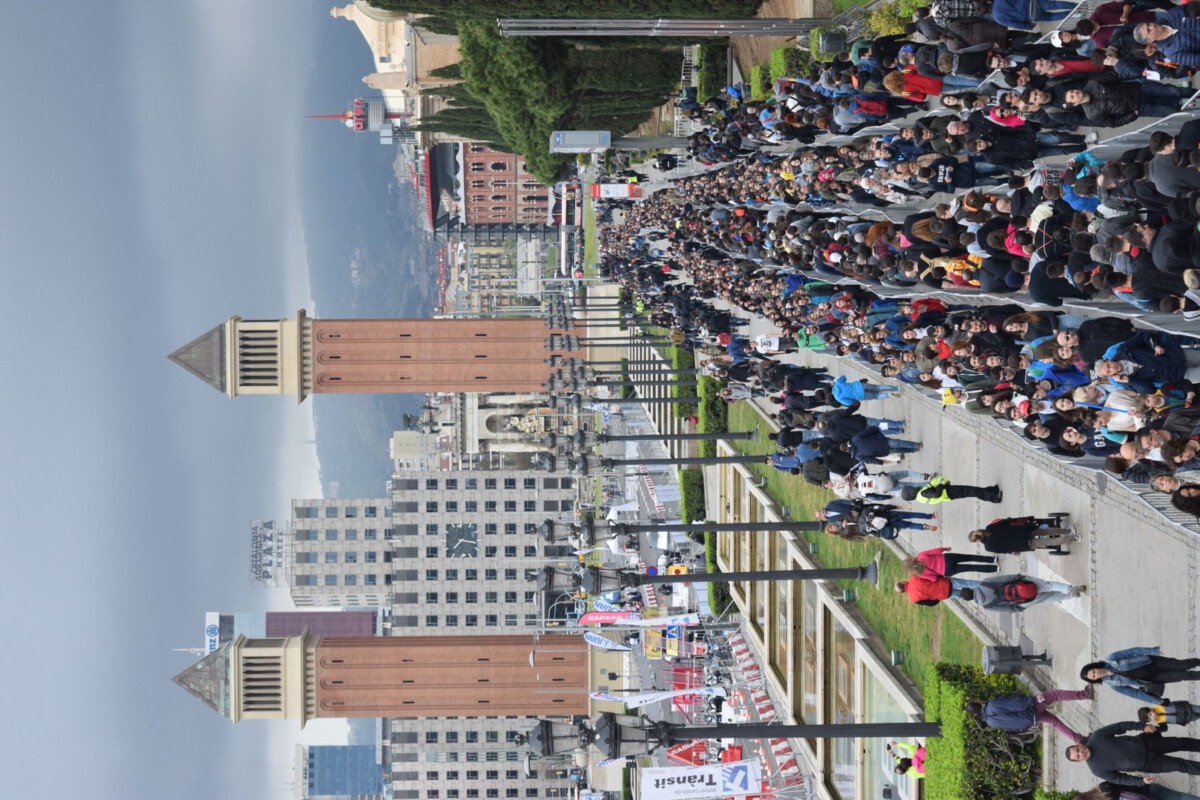Venice, Italy: A City Sinking Under Its Own Popularity

Venice stands as a living museum, but its allure has come at a steep cost. In recent years, the city famously banned large cruise ships from entering its historic lagoon in 2021. This dramatic move was sparked by the relentless surge of over 30 million visitors per year, with local residents often feeling like extras in their own city. The centuries-old architecture and fragile canal system have suffered under the weight of this attention, leading to concerns about irreversible damage. The city council’s decision was not just about the ships—it was a stand against the kind of mass tourism that turns a treasured city into a theme park. Residents had protested, voicing their frustration as narrow streets became packed and daily life grew impossible. The new rules aim to protect both Venice’s delicate environment and the spirit of its community, with hopes that sustainable travel will replace the unsustainable crowds.
Barcelona, Spain: Fighting for Its Soul Amid the Crowds

Barcelona, bursting with energy and creativity, has faced its own battle against overtourism. In 2019, the city imposed a moratorium on new hotel licenses in neighborhoods hardest hit by visitors. With short-term rentals booming, locals found themselves priced out of their own homes and neighborhoods transformed into tourist playgrounds. Daily life became a struggle as crowds overwhelmed public spaces and local businesses shifted their focus to cater to outsiders. The city’s leadership stepped in, drawing a line in the sand to protect cultural identity and community ties. Their regulations weren’t just about numbers—they were about restoring dignity to neighborhoods and giving residents back their city. The tension between prosperity and preservation is palpable, with Barcelona taking bold steps to show that a city’s soul matters more than its popularity.
Dubrovnik, Croatia: Protecting Medieval Magic

Dubrovnik’s stone walls and red-tiled roofs have enchanted visitors for centuries, but the flood of tourists in recent years pushed the city to its limits. In 2021, local authorities capped the number of daily visitors to the Old Town at 8,000. This was a direct response to the damage caused by up to 1.5 million tourists each summer—historic structures were wearing down, and the city’s UNESCO status was at risk. The move was about more than just protecting buildings; it was about ensuring that the unique atmosphere of Dubrovnik’s ancient streets survived for future generations. Residents had raised the alarm as congestion made daily routines nearly impossible, and the city’s charm seemed to be slipping away. By limiting numbers, Dubrovnik took a stand to preserve authenticity and allow visitors to experience the city’s magic without trampling it.
Santorini, Greece: Saving the Island from Itself

Santorini’s whitewashed homes and breathtaking sunsets are icons of Greek tourism, but the island paid a high price for its fame. In 2020, authorities began limiting cruise ship arrivals, alarmed by the strain on water, waste systems, and narrow streets. With millions of annual visitors, infrastructure buckled under the pressure, and the natural environment suffered. Residents watched as their peaceful island morphed into a bustling hotspot, and traditional ways of life faded. By setting limits, the local government aimed to reclaim balance and protect both the land and its people. The restrictions are a response to the harsh reality that unchecked tourism can erode the very things that make a place special in the first place—Santorini’s action was both desperate and deeply hopeful.
Machu Picchu, Peru: Preserving a Wonder for the Ages

Machu Picchu, Peru’s crown jewel, has long captivated the world. But as visitor numbers soared past 1.5 million annually, the ancient site began to suffer. In 2021, the government introduced a daily cap of 2,500 visitors and a strict ticketing system. The move was prompted by visible wear on the stone paths and mounting concern from archaeologists about long-term preservation. The site’s delicate terraces and structures, already centuries old, were under threat from constant foot traffic. Locals and conservationists advocated fiercely for protection, fearing that Machu Picchu’s legacy could be lost. The new measures are strict, but they reflect a hard-won consensus: the site is too precious to risk for the sake of mass tourism.
Bali, Indonesia: Struggling Under the Weight of Its Own Success

Bali’s lush landscapes and spiritual traditions have made it a magnet for travelers, but the island has struggled to manage the consequences. With over 6 million arrivals in 2019, local authorities in 2022 began capping tourist numbers to tackle pollution, resource shortages, and overcrowding. The sudden popularity brought traffic jams, overbuilt resorts, and mounting waste, threatening both the environment and local culture. Residents voiced frustration as beaches and temples became crowded scenes, and traditional life was disrupted by the constant flow of outsiders. The new limits are part of a broader push for sustainable tourism, aiming to safeguard Bali’s unique spirit for future generations. The challenge is daunting, but the island’s leaders are intent on ensuring that beauty doesn’t become a burden.
Amsterdam, Netherlands: Drawing the Line Against Overtourism

Amsterdam’s picturesque canals and vibrant nightlife have made it a global favorite, but the city’s charm has become a double-edged sword. In 2021, the city banned new hotels in certain districts and introduced strict limits on short-term rentals. The measures were a response to complaints from locals about noise, litter, and the loss of community. With millions of tourists each year, neighborhoods struggled to maintain their character, and the cost of living soared. City officials decided enough was enough, determined to put residents first and restore balance. Their approach is comprehensive, targeting not just accommodation but also tourist behavior in key areas. Amsterdam’s tough stance is a statement: the city’s wellbeing is more important than unchecked tourism revenue.
Florence, Italy: Fighting for Its Artistic Heritage

Florence, the cradle of the Renaissance, has long been a magnet for art lovers. But with over 10 million visitors annually, the city’s treasures were at risk. In 2022, authorities introduced a reservation system for entry to the Uffizi Gallery and Accademia to manage the crush of tourists. The move was prompted by crowding that threatened priceless works of art and overwhelmed local resources. Residents often found themselves pushed aside in their own city, and the atmosphere of quiet appreciation was lost amid the bustle. By requiring reservations, Florence hopes to preserve the integrity of its world-famous collections and make the experience richer for all. The city’s leaders are determined that Florence will remain a living, breathing center of culture—not just a backdrop for selfies.
Kyoto, Japan: Defending Ancient Traditions

Kyoto’s temples and cherry blossoms have become symbols of Japanese beauty, but the city’s popularity has created real problems. By 2021, Kyoto was drawing over 50 million visitors a year, leading to congestion, noise, and strain on public spaces. City officials responded by introducing entry fees at peak times for the most popular sites, hoping to deter casual crowds and encourage respectful tourism. Residents had grown weary of crowded buses and queues at local shrines, and many feared that traditional ways of life were being lost. The city’s measures are designed to protect both the physical and cultural landscape that make Kyoto unique. The message is clear: the city’s heritage must come first, even if it means fewer visitors can experience it at once.
Galapagos Islands, Ecuador: Nature’s Last Stand

The Galapagos Islands, famous for their unique wildlife and pristine landscapes, face a delicate balancing act. In 2020, the Ecuadorian government capped visitors at just 40,000 per year, a fraction of what many destinations see. The move was driven by urgent concerns about the fragile ecosystem, which has been threatened by invasive species, pollution, and habitat destruction linked to tourism. Strict rules now govern where visitors can go and what they can do, all with the goal of preserving the islands for future generations. Scientists and conservationists have sounded the alarm for years, warning that even small changes can have big consequences in such a unique habitat. The Galapagos’ limited access sends a powerful message: some treasures are too precious to share with the world unchecked.







